Growth rates of 70kg/day and higher are being recorded on many farms across the country, particularly in the south, west and southeast. However, growth on farms in the northeast of the country is being restricted by a significant moisture deficit and a persistently biting east wind.
That said, with warm conditions expected to last and some rain crossing the country over the weekend, the rise in growth rates is expected to continue. Farms with low stocking rates (< 3.5 LU/ha) could very quickly run into surpluses of grass by early May.

The first step should be to reduce concentrates being fed to maximise grass intake. After all, 1kg of grass grown and utilised will cost 5c during the summer, whereas every kg of concentrate fed will come at a cost of 25c to 30c.
A lot of dairy farms are now close to peak production. The plan now should be to maintain this for as long as possible and this will all depend on the grass quality in front of cows.
Beef and dairy farms should now be operating on an 18- to 21-day rotation
Once paddocks go above 1,700kg DM/ha, with average farm cover/LU of greater than 200kg DM/ha, they should be taken out as surplus bales.
On beef farms, while small groups would have aided turnout this spring, groups should now be “bunched up” where possible. This will increase the grazing power per group and shorten the residency time in each paddock, leading to significantly improved regrowths. Beef and dairy farms should now be operating on an 18- to 21-day rotation.
Spring reseeds should be sown by now or be going in over the next two weeks. You want this ground coming back into the rotation in early June if possible, when peak grass growth starts to dip off and farms can often run tight on grass.
Brendan Ryan
Pallaskenry Ag College, Co Limerick
Last week, another 30 units/ac of N were applied – some in the form of 3,000 gal/ac of watery slurry on recently grazed covers. This brought total N application on the grazing block up to 88 units/ac so far this year. Silage ground was also topped up with 30 units/ac N and 6 units/ac of sulphur. Cows and calves are doing well. All calves are dehorned and have received their primary blackleg vaccination. The cows are done for BVD, Lepto and IBR ahead of breeding. Spring 2019-born bulls, for slaughter under-16-months, averaged 538kg at weighing on 28 March. The lambs are also flying it, helped by the ewes milking well. I will weigh lambs later this week dose them for nematodirus and coccidiosis and a heptavac P vaccination.
Tommy O’Harte
Clones, Co Monaghan
We have been busy turning out stock over the past two weeks as growth has taken off. It’s generally a late farm here with some paddocks heavy so we grazed those off with sheep up until Christmas. We have all of our paddocks spread with 30 units/ac of N in the form of urea, and about 50% of the farm was spread with 2,000 gal/ac of slurry via a trailing shoe earlier this spring. We have 45 cows in our spring group which we will start to AI on 5 May. Some of our pedigree heifers are being synchronized this week to calve a little earlier. Autumn calves have been weaned and are currently grazing off some reseeded swards. There are just three cows left to calve at the moment.
Declan Marren
THRIVE demonstration farm, Cashel, Tipperary
Due to a later turnout and having grazed the silage ground before closing, some paddocks on the grazing ground have gone too strong for grazing. We took out just over 10ac as surplus grass last week and a further 12ac have been cut this week. Even with silage ground out of the equation, our demand is relatively low at 36kg DM/ha/day. If growth continues climbing, we will be taking out paddocks again quite soon. At this stage, the 140 yearlings are out almost five weeks and are visibly thriving. The oldest of the calves are now out full time and are on once-a-day milk. The next two batches of calves are only out by day as nighttime temperatures are still low.
Caroline O’Sullivan
Teagasc Curtins Farm, Cork
We have taken 25 acres out for reseeding. It was sprayed off last week and will be cut and baled today. With this ground out we are going to be running a stocking rate of 4.09lu/ha. We are grazing covers slightly higher than we would like at 1,600kg/ha but are getting away with it as the weather is good and clean-outs haven’t been affected. We are going with sexed semen on 30% of the herd this year so we decided to start the breeding season a little earlier in case conception rates drop. Breeding started 22 May. We are currently following cows with 30units/ac of protected urea.
Barry Reilly
Teagasc Ballyhaise, Co Cavan
We are currently running the grass fairly tight but expect growth to increase and grass will be building again. Pre-grazing yield is around 1,400kg. We took a paddock out for surplus bales which was cut immediately so it’s back in the rotation and growing again which is very important when stocked over 4.5LU/ha. There is 30% of the milking platform closed up for long-term silage which was topped up with fertiliser this week. All the milking platform received 30 units of N/acre last week. We are down to just four cows left to calve. Cows are tail-painted and we are seeing a lot of activity.
Liam Hanrahan
Callanview, Co Clare
With the wet spring it was March before cows went out here and when we did get out we went through the first round very quickly. However, the good weather really came right for us and we were able to keep cattle on grass full-time and still had enough grass back to start the second round last week and we are really seeing the benefits of this in the milk tank. We are hoping for a burst of growth to come as we are slightly on the tight side of things. Pre-grazing yields are at 1,300kg/ha, so quality is excellent and graze-outs are not a problem.




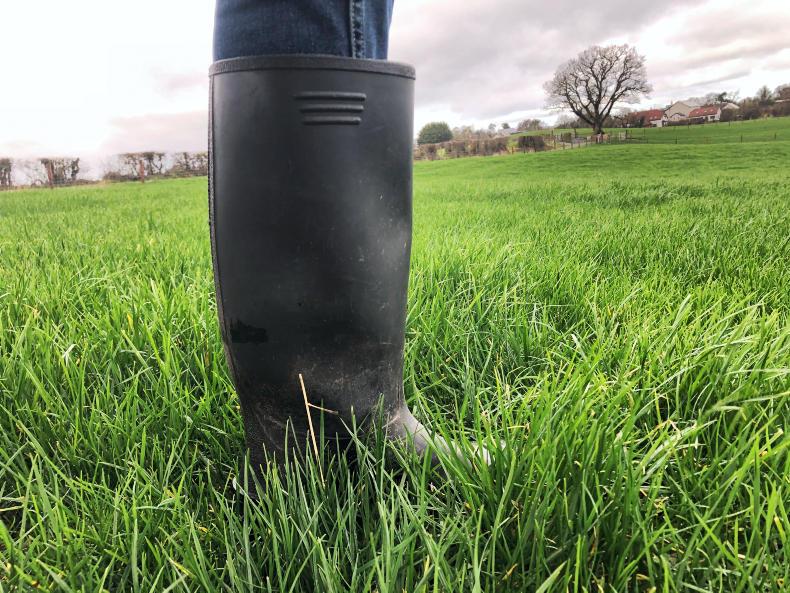
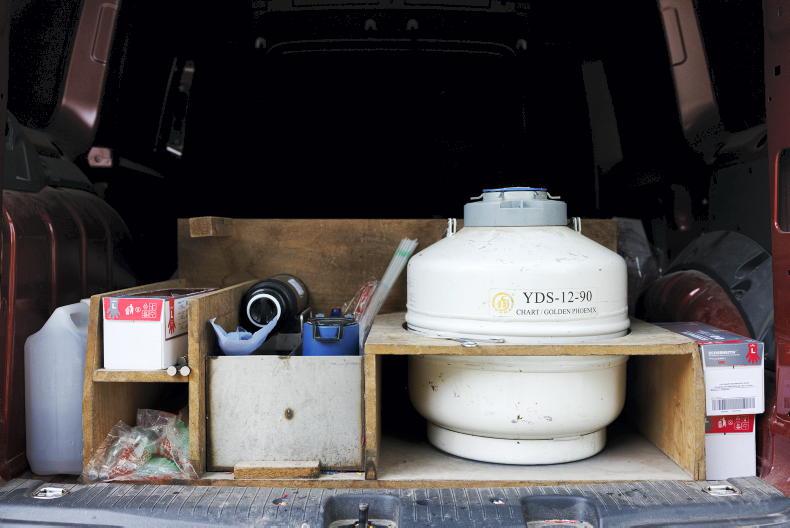

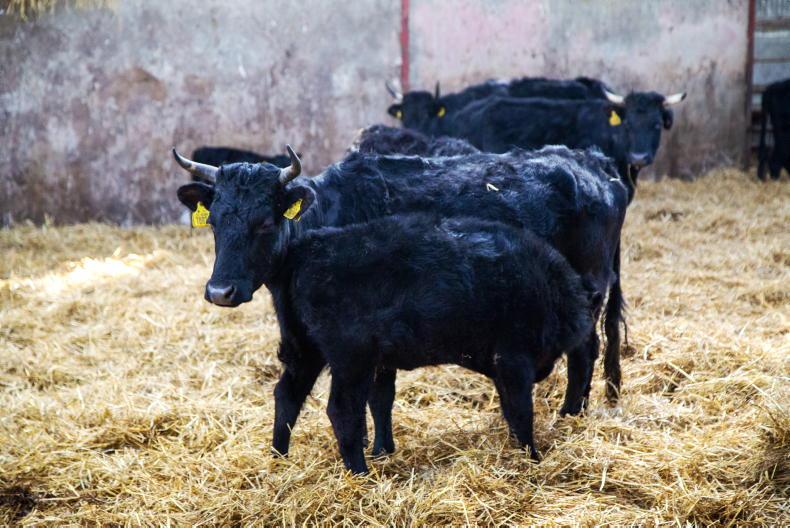
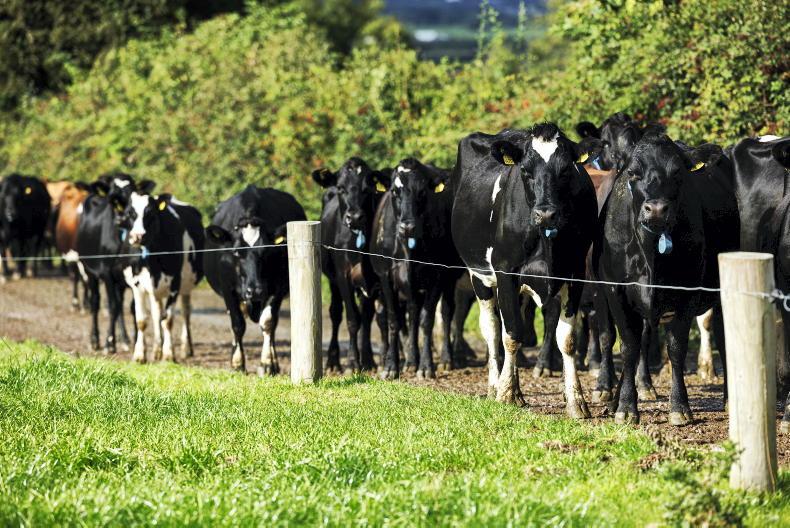
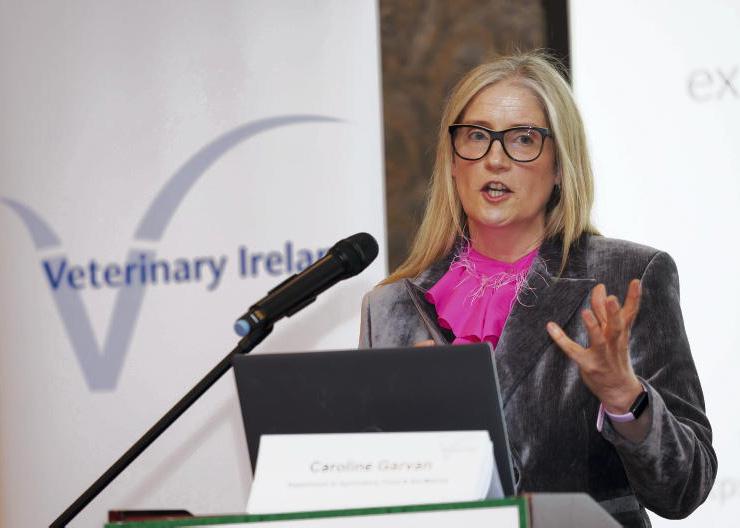
SHARING OPTIONS